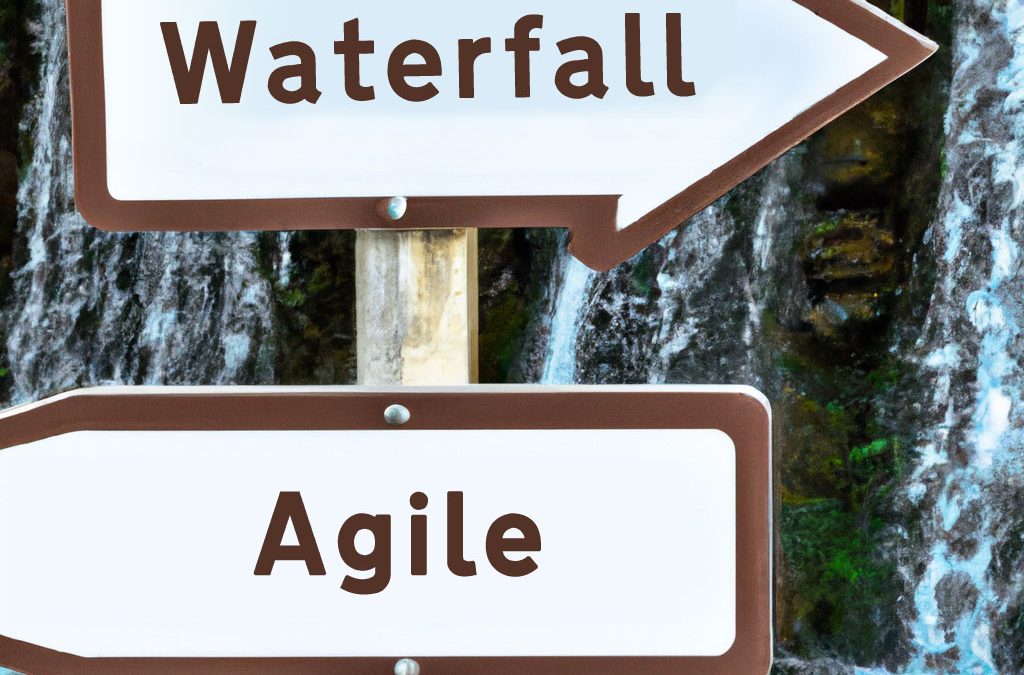For many years enterprises have been moving away from the classic waterfall approach to software project management and embracing the agile ethos. While agile has many benefits, the waterfall approach isn’t dead. In fact, in the right circumstances a synergy with agile can prove the perfect project management approach.
Waterfall & Agile: The Concepts
Agile Development is a rapid adaptive software development methodology that emphasises communication and collaborative relationships both within development teams and between developers and customers. Comprehensive project plans and detailed documentation are eschewed in favour of quickly producing and delivering working software. All the while adapting promptly and without delay to changing customer requirements.
In a project that follows the traditional waterfall development methodology, a linear approach to software development follows a set of predetermined steps. It begins with an initial planning phase, followed by system design, implementation, testing, deployment, and finally maintenance.
Software development projects that require accurately planned steps, clearly defined milestones and fixed budgets are best-suited for the waterfall methodology. It is ideal for smaller projects with predetermined requirements that do not have the need for frequent changes or updates.
On the other hand, the agile methodology is best-suited for software development projects where requirements can change throughout the project. Also, the scope of work is either unknown or large and budgets are flexible. It is an iterative approach that allows constant feedback loops and modifications to be made to the project as it progresses.
The Hybrid Approach
But what if your project doesn’t align with either of these approaches? Or if your project or organisation is committed to a waterfall methodology but you want to take advantage of some of the benefits of the agile approach. Or you want to offer your stakeholders the confidence of the in depth quality testing offered by waterfall, but to develop and deploy at the pace offered by agile. There is a way forward – the Agile-Waterfall Hybrid.
The principle is to use the best aspects of each methodology depending on the particular requirements of a project. For example the hybrid model is an effective solution for clients who are hesitant to adopt the full agile approach, as it allows them to define a fixed budget and timeframe through comprehensive Waterfall planning. Then, by using agile techniques during development and testing, the business can then enjoy the benefits shorter iterative deployments.
Alternatively enterprises may wish to enhance their current operations by integrating agile management and communication concepts within the waterfall-style approach. By taking advantage of Scrum’s team management and structured sprint cycles; applying the Lean methodology for minimizing waste and redundancy; or embracing Kanban’s ongoing communications focus – teams can boost speed and effectiveness while maintaining efficiency.
The point is, there is no one size fits all approach for every organisation or project. Familiarity with one methodology may become your default approach to every project without real thought given to what best suits a particular project. By being flexible in our approach we can get the best of both worlds and ultimately ensure that our project is delivered functionally complete, on time and on budget.

